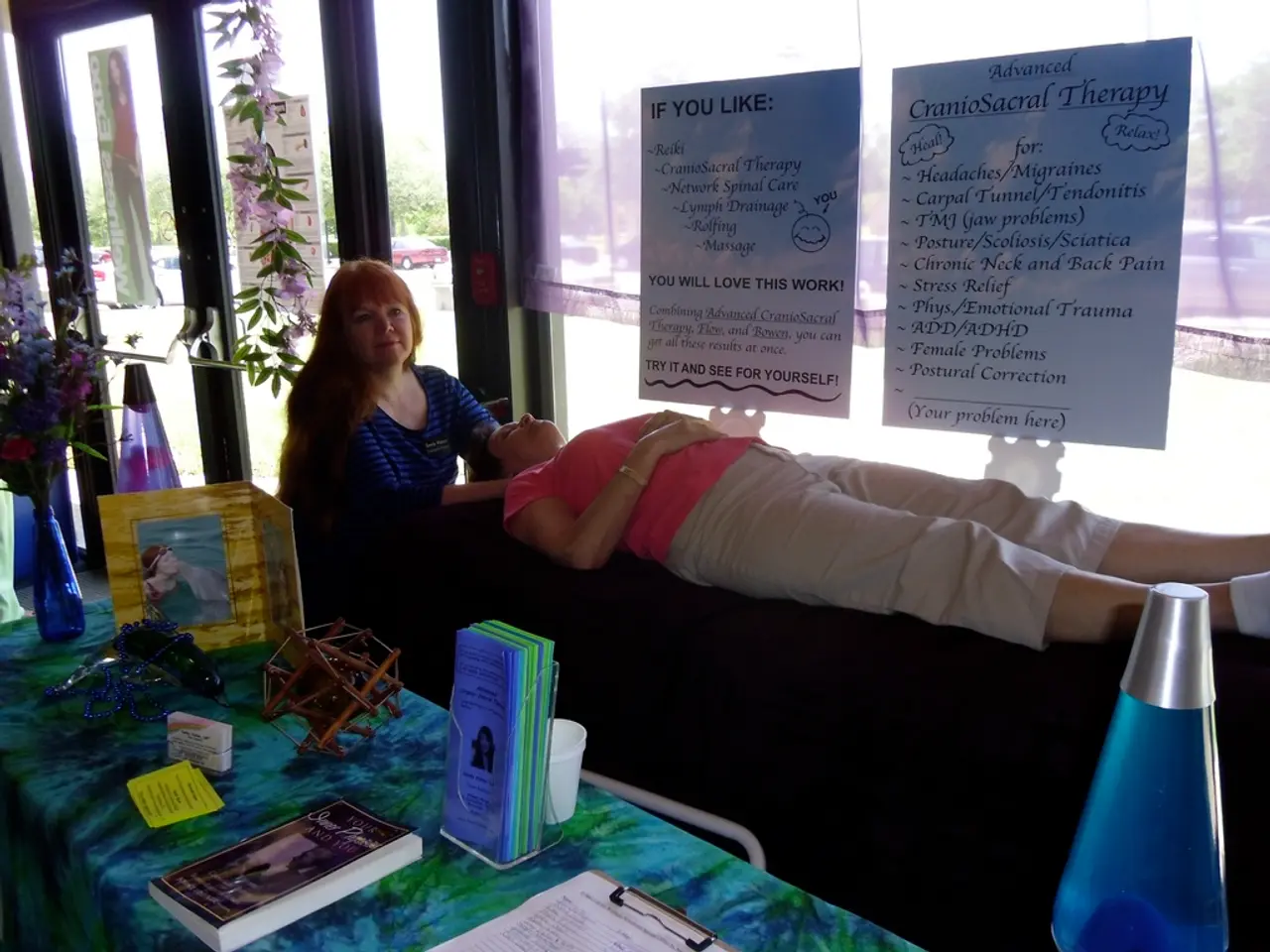Alleviating Lower Back Pain: Household Cures and Professional Solutions
Managing Lower Back Pain: Home Remedies, Medical Treatments, and When to Seek Help
Lower back pain is a common issue that affects many people. Fortunately, there are various ways to manage this discomfort, from home remedies to medical treatments.
Home Remedies
For immediate relief, applying a cold compress or ice pack to the affected area can help lessen pain and swelling. After about 48 hours, switching to heat therapy, such as a warm compress or taking a warm bath, can relax muscles and improve blood flow, alleviating pain [1][3][4]. Gentle stretching and low-impact exercises like biking, swimming, yoga, and targeted physiotherapy exercises can strengthen core muscles, improve posture, reduce stiffness, and relieve pain [1][3][4].
Medical Treatments
Typically, nonprescription medications such as ibuprofen, acetaminophen, or naproxen sodium are used for short-term pain relief. Topical anti-inflammatory gels like diclofenac may also help reduce pain and inflammation [4]. If over-the-counter medications fail to improve pain after about 10 days, consulting a doctor is recommended, who may advise prescription medications or physical therapy [4].
When to Seek Help
Persistent or severe lower back pain requires professional attention. If pain lasts more than a few weeks despite self-care and medication, worsens or does not improve with rest, or is accompanied by symptoms like numbness, tingling, weakness in legs, bowel or bladder problems, or unexplained weight loss, it is crucial to seek medical help [4].
Medical Procedures
For more severe cases, surgical options may be considered. Disk replacement, vertebroplasty, laminectomy, and spinal fusion are surgical procedures that can help treat lower back pain [2][3]. Epidural steroid injections (ESIs) involve the injection of steroids and possibly a local anesthetic into the epidural space within the spinal canal to treat nerve compression [2].
Complementary Therapies
Acupuncture, low level laser therapy, mindfulness-based stress reduction, electromyography biofeedback, progressive muscle relaxation, tai chi, and yoga are complementary therapies with low to moderate evidence for relieving chronic lower back pain [1].
Preventing Lower Back Pain
Maintaining careful movements, such as getting in and out of bed slowly and using proper techniques, can help prevent lower back pain. Sitting for long periods without proper support may put extra pressure on the joints and lead to pain, while sleeping on the side in a fetal position, on a firm surface, can ease pressure on the back and open up joints in the spine [2].
In summary, managing lower back pain involves a combination of home remedies, medical treatments, and preventive measures. By understanding these options, you can find relief and maintain an active lifestyle. Always consult with a healthcare professional for personalised advice and treatment.
| Category | Recommendations | |------------------------|------------------------------------------------------------------------------------------------------------| | Home Remedies | Cold compress (first 48 hrs), then heat; gentle stretches and core-strengthening exercises; yoga; posture care| | Medical Treatments | OTC pain relievers (ibuprofen, acetaminophen), topical anti-inflammatories, possible prescribed meds | | Seek Doctor | Persistent pain > few weeks, severe or worsening pain, neurological symptoms (numbness, weakness), trauma | | Surgical Procedures | Disk replacement, vertebroplasty, laminectomy, spinal fusion | | Complementary Therapies | Acupuncture, low level laser therapy, mindfulness-based stress reduction, electromyography biofeedback, progressive muscle relaxation, tai chi, yoga | | Prevention | Proper movement techniques, good posture, and careful sleeping positions |
- In severe cases of lower back pain, scientifically-backed treatments like disk replacement, vertebroplasty, laminectomy, and spinal fusion may be utilized to address the issue [2][3].
- For chronic lower back pain, mental health is crucial, and complementary therapies such as acupuncture, yoga, tai chi, and mindfulness-based stress reduction can provide relief [1].
- Epidural steroid injections (ESIs) are a part of medical treatments for lower back pain, involving the application of steroids and anesthetics to reduce nerve compression [2].
- In addition to traditional pain management methods, integrating various mental health therapies can help manage chronic diseases more effectively for overall health and wellness [1].
- While piercing and stretching exercises can strengthen core muscles and alleviate lower back pain, paying attention to proper techniques and good posture is essential during daily activities [1][3][4].
- It's essential to consult with healthcare professionals before pursuing health and wellness practices or therapies, since personalized advice and treatment options are vital to addressing medical conditions effectively [1][2][4].




